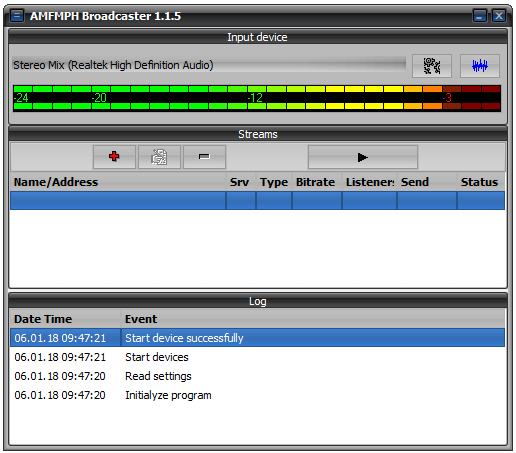

The benefit of software encoders is that they are generally more cost-effective. Encoding software gets your video ready for the internet.Īn encoder can be either hardware-based or software-based. Simply put, an encoder converts a RAW video file into a ready-to-stream digital video file. Encoding SoftwareĮncoding software is a key component of the video streaming process. That said, let’s take a look at a few of the most important types of video streaming software solutions. It is important to note that it is common for streaming software to include multiple functionalities, such as a simulcasting tool may have built-in encoding support. Some streaming software, such as encoding software, is essential, whereas other types are used to take the streaming experience to the next level. Generally, streaming software is used to create a more advanced or more professional-looking stream. Video streaming software is a type of tool that broadcasters use to enhance their streaming experience in one way or another.
#Streaming software switcher cast professional#
Introduction to Video Streaming Software Video streaming software is great for broadcasting at the professional level. 15 Popular Video Streaming Software Applications.Introduction to Video Streaming Software.

Please note that this post has been updated to reflect the most accurate information on video streaming software as of May 2022. We’ll provide detailed information about key advantages and pricing for each streaming software to help you weigh your options and choose the best streaming video software for your needs. Then, we’ll move into a review of the top 15 examples of popular live streaming software for different use cases. In this post, we’ll introduce video streaming software basics and streaming protocols such as RTMP and HLS streaming to give you a clear understanding of the related terminology. Many businesses use live and on-demand streaming content to better connect with their audiences. Online video streaming is a helpful tool for all sorts of organizations. This has created a great need for video streaming software. 89% of video content providers say that they get great ROI from online video. Video is taking over the internet, and users are watching more content online than ever before. However, you can use your disconnected Joy-Con controllers, or other compatible wireless controllers, wirelessly while your Switch is docked to the TV.In recent years, we’ve entered a very exciting time for online video. The Switch also doesn't support built-in casting technologies like Google Cast or Apple's AirPlay. While you can use a wireless HDMI adapter, you'd still need to connect a wired transmitter dongle to your Switch, which sort of ruins the "wireless" portion of this idea. Unfortunately, there's really no useful way to wirelessly connect your Nintendo Switch to your TV.
#Streaming software switcher cast tv#
How do I connect to my Nintendo Switch to my TV wirelessly? Just make sure whichever model you choose specifies that it is compatible with Nintendo's Switch. This could be a smaller travel-sized dock, a dongle that connects to the Switch's USB-C port to provide the necessary video and power ports, or even a USB-C to HDMI adapters you already own for your laptop. However, you will still need some form of adapter. If you want to hook your Switch up at a friend's house, or vacation home, you don't need to bring your whole dock. CloseĬan I connect my Switch to the TV without the included dock? If you see inaccuracies in our content, please report the mistake via this form.

If we have made an error or published misleading information, we will correct or clarify the article. Our editors thoroughly review and fact-check every article to ensure that our content meets the highest standards. Our goal is to deliver the most accurate information and the most knowledgeable advice possible in order to help you make smarter buying decisions on tech gear and a wide array of products and services. ZDNET's editorial team writes on behalf of you, our reader. Indeed, we follow strict guidelines that ensure our editorial content is never influenced by advertisers. Neither ZDNET nor the author are compensated for these independent reviews. This helps support our work, but does not affect what we cover or how, and it does not affect the price you pay. When you click through from our site to a retailer and buy a product or service, we may earn affiliate commissions. And we pore over customer reviews to find out what matters to real people who already own and use the products and services we’re assessing.

We gather data from the best available sources, including vendor and retailer listings as well as other relevant and independent reviews sites. ZDNET's recommendations are based on many hours of testing, research, and comparison shopping.


 0 kommentar(er)
0 kommentar(er)
